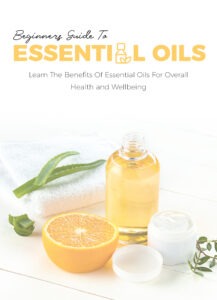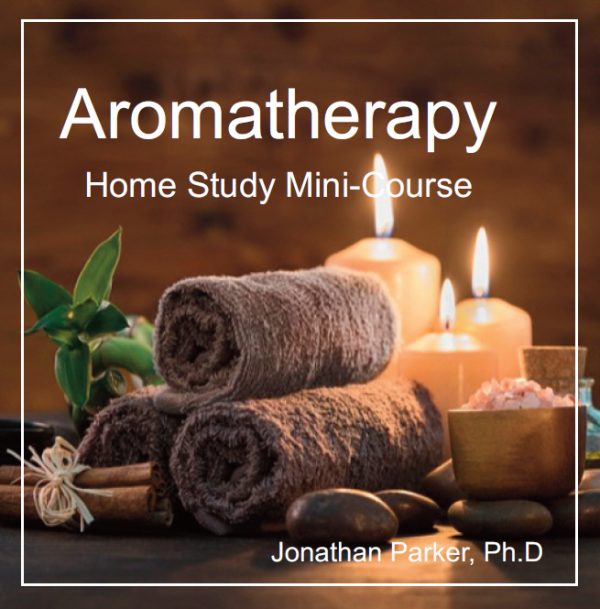Are Essential Oils Toxic? A Comprehensive Overview

Before diving in, please note: This post is for informational purposes only. If you’d like to know more about how we approach topics, feel free to check out our friendly Disclaimer Page.
Hey there, amazing readers! 🖐️ Just a quick note: yes, we know there are a lot of ads here. Trust us, we get it—it’s not the prettiest look, but they help us keep this blog alive and kicking. Those pesky little ads cover the costs of all the behind-the-scenes magic, from hosting and tech stuff to creating content we hope you’ll love.
We’re committed to delivering quality posts, and your support (even just sticking around despite the ads) means everything to us. So, bear with us, and thanks for helping us keep the good vibes rolling. Now, on to the fun stuff! 😉
TRANSLATE BUTTON AT THE END OF THE ARTICLE
A Quick Overview: Are Essential Oils Toxic? A Comprehensive Overview
Essential oils have gained immense popularity in recent years.
People use them for everything from aromatherapy and relaxation to cleaning and skincare.
But along with rising fame comes a flurry of questions.
Are these potent plant extracts safe?
Or could they pose hidden risks?
Let’s dive into the world of essential oils to uncover the truth about their safety and potential toxicity.
Introduction: Understanding Essential Oils and Their Uses
Essential oils are concentrated liquids extracted from plants, capturing their fragrance and beneficial properties.
Each oil has a unique scent and various uses, making them staples in the natural health community.
People often turn to essential oils for aromatherapy, believing they can uplift moods, alleviate stress, and even promote overall wellness.
In addition to relaxation, essential oils are also popular in skincare routines, used to support skin health, treat minor ailments, and provide a natural fragrance.
Moreover, they have found their way into cleaning products, touted for their antibacterial and antiviral properties.
However, with such versatile applications, it’s crucial to understand the safety of these oils.
Are they as harmless as they seem?
Or do they carry potential risks that warrant caution?
Let’s explore what essential oils are made of and if they can be toxic.
What Are Essential Oils? A Quick Overview of Origins
Essential oils are derived from various parts of plants, including leaves, flowers, bark, stems, and roots.
The extraction process often involves steam distillation or cold pressing, techniques that preserve the natural essence of the plant.
Popular oils like lavender, tea tree, and eucalyptus all come from distinct sources, each with its own unique benefits.
Historically, essential oils have been utilized for thousands of years.
Ancient civilizations like the Egyptians used them for religious ceremonies, mummification, and beauty rituals.
The Greeks and Romans embraced essential oils for their medicinal properties, while the Chinese integrated them into traditional healing practices.
Today, the use of essential oils has evolved into a broader wellness movement.
People use them not just for physical health but also for emotional and spiritual well-being.
Their diverse applications and historical roots make essential oils a fascinating subject of study.
Are Essential Oils Toxic? Debunking Common Myths
The question of toxicity often arises when discussing essential oils.
First things first, it’s vital to clarify that essential oils themselves aren’t inherently toxic.
However, their concentrated nature means they can cause adverse reactions if misused.
Some common myths include:
All essential oils are safe for everyone: This isn’t true.
Certain oils may cause reactions in sensitive individuals or those with specific health conditions.
More is better: Applying a larger amount of essential oil doesn’t equate to better results.
Discover "Beginner's Guide to Essential Oils" 🌿🌺

Overuse can lead to skin irritation or other negative effects.
Natural means safe: Just because something is natural doesn’t guarantee its safety.
Many natural substances can be harmful in concentrated doses.
Understanding these myths helps pave the way for safer usage and informed choices.
The Science Behind Essential Oils and Their Composition
Essential oils are complex mixtures of various chemical compounds, including terpenes, esters, aldehydes, and phenols.
Each component contributes to the oil’s aroma and therapeutic properties.
For instance, the calming scent of lavender comes from linalool and linalyl acetate, known for their soothing effects.
Scientific research continues to explore how these compounds interact with our bodies.
Some studies suggest that certain essential oils may possess anti-inflammatory, antifungal, and antibacterial properties.
Others indicate their potential to influence mood and mental clarity.
However, it’s crucial to remember that while science uncovers benefits, more research is needed to understand the full scope of essential oils’ effects.
Not all oils are created equal, and their impact can vary widely based on individual reactions.
Potential Risks: When Essential Oils Can Be Harmful
Despite their benefits, essential oils can pose risks if misused.
Here are some potential dangers to be aware of:
Skin Irritation: Applying undiluted essential oils directly to the skin can cause rashes or burns.
Always dilute oils with a carrier, such as coconut or jojoba oil.
Allergic Reactions: Some people may be allergic to specific oils.
Conduct a patch test before widespread application.
Respiratory Issues: Inhaling certain oils, especially in large quantities, can irritate the respiratory system.
Be cautious when diffusing oils in a small, enclosed space.
Interactions with Medications: Certain essential oils can interact with medications, affecting their efficacy.
Always consult a healthcare professional if you’re on medication.
Toxicity in Ingestion: Some oils can be toxic if ingested.
Avoid consuming essential oils unless under the guidance of a qualified practitioner.
Understanding these risks empowers users to make informed choices and enjoy the benefits of essential oils safely.
Safe Usage: Guidelines for Using Essential Oils Safely
To harness the benefits of essential oils while minimizing risks, follow these guidelines:
Dilute First: Always dilute essential oils before applying them to the skin.
A common ratio is 1-2 drops of essential oil per teaspoon of carrier oil.
Use High-Quality Oils: Choose reputable brands that provide transparency about their sourcing and extraction methods.
Avoid oils with synthetic additives.
Consult Professionals: If you’re unsure about which oils to use or how to use them, consult a qualified aromatherapist or healthcare provider.
Keep Away from Eyes and Mucous Membranes: Essential oils can cause irritation if they come into contact with sensitive areas.
Always wash your hands after using oils.
Store Properly: Keep essential oils in dark glass bottles away from direct sunlight.
This helps maintain their potency and safety.
By adhering to these guidelines, you can enjoy the myriad benefits of essential oils while mitigating potential risks.
Allergies and Sensitivities: Who Should Be Cautious?
Individuals with allergies or sensitivities should approach essential oils with care.
Here’s who should be particularly cautious:
Asthma or Respiratory Conditions: Those with asthma may find that certain oils trigger symptoms.
Stick to milder scents and consult with a healthcare provider before use.
Sensitive Skin: If you have eczema or other skin conditions, some oils can exacerbate symptoms.
Always conduct a patch test.
Pregnant or Nursing Women: Some oils are not recommended during pregnancy or breastfeeding.
Consult a healthcare provider before using essential oils.
Children and Infants: Essential oils should be used cautiously around children.
Many oils are too strong for their delicate systems.
Taking these precautions helps ensure a safe experience with essential oils.
Essential Oils and Pets: What Every Pet Owner Should Know
Pet owners need to be especially vigilant when using essential oils.
While some oils can benefit animals, others can be harmful or even toxic.
Here’s what you should keep in mind:
Avoid Certain Oils: Oils such as tea tree, eucalyptus, and citrus oils can be toxic to pets.
Always research or consult a veterinarian before using any oil around animals.
Diffusion vs.
Direct Application: If using essential oils in a diffuser, ensure your pet can leave the room if they choose.
Monitor their behavior for any signs of distress.
Dilution is Key: If you want to apply oils to your pet, always dilute them significantly and consult a vet for safe usage.
Observe Reactions: Pay close attention to your pet after introducing any essential oil into your home.
If they show signs of discomfort, discontinue use immediately.
Being informed and cautious can help keep both you and your furry friends safe.
The Role of Dilution: Making Essential Oils Safer
Dilution is critical when using essential oils.
This process reduces the concentration of the oil, making it safer for topical application and reducing the risk of adverse reactions.
Here are some tips on how to dilute effectively:
Carrier Oils: Common carrier oils include coconut, almond, and olive oil.
These oils not only dilute essential oils but also nourish the skin.
Dilution Ratios: For general use, a 2% dilution is often recommended.
This means 12 drops of essential oil in 1 ounce (30 ml) of carrier oil.
For sensitive areas or children, consider a 1% dilution.
Pre-Mixed Blends: Some companies offer pre-diluted oils, which eliminates the guesswork and ensures safe application.
Store Diluted Oils: Keeping diluted blends on hand can make it easier to use them safely.
Just remember to label them clearly!
By taking the time to dilute, you can reap the benefits of essential oils without the risks.
Quality Matters: Choosing Safe and Pure Essential Oils
When it comes to essential oils, quality truly matters.
Here’s how to choose the best oils:
Look for Therapeutic Grade: While there’s no official certification, therapeutic-grade oils are often higher quality and better for health-related uses.
Check for Transparency: Reputable brands provide information about the sourcing and distillation processes.
Look for companies that offer batch testing results.
Read Reviews: Customer feedback can provide insight into the effectiveness and quality of an oil.
Avoid Synthetic Oils: Steer clear of oils labeled as "fragrance" or "perfume," as these often contain synthetic compounds that can be harmful.
Investing in high-quality essential oils makes a difference in both safety and effectiveness.
Conclusion: Embracing Essential Oils with Caution
Essential oils can be a wonderful addition to our wellness routines, providing a natural alternative for relaxation, cleaning, and skincare.
However, it’s crucial to approach them with caution and respect.
By understanding their composition, potential risks, and safe usage practices, we can enjoy the many benefits of essential oils without compromising our well-being.
Remember, knowledge is power!
Final Thoughts: Enjoying Essential Oils Responsibly
As you explore the world of essential oils, stay curious but cautious.
Whether you’re looking to create a calming environment or enhance your skincare routine, take the time to learn about the oils you choose.
With informed choices and safe practices, we can embrace the wonders of essential oils responsibly.
Happy oiling!

The Enlightenment Journey is a remarkable collection of writings authored by a distinguished group of experts in the fields of spirituality, new age, and esoteric knowledge.
This anthology features a diverse assembly of well-experienced authors who bring their profound insights and credible perspectives to the forefront.
Each contributor possesses a wealth of knowledge and wisdom, making them authorities in their respective domains.
Together, they offer readers a transformative journey into the realms of spiritual growth, self-discovery, and esoteric enlightenment.
The Enlightenment Journey is a testament to the collective expertise of these luminaries, providing readers with a rich tapestry of ideas and information to illuminate their spiritual path.
Our Diverse Expertise 🌟
While our primary focus is on spirituality and esotericism, we are equally passionate about exploring a wide range of other topics and niches 🌍📚. Our experienced team is dedicated to delivering high-quality, informative content across various subjects ✨.
To ensure we provide the most accurate and valuable insights, we collaborate with trusted experts in their respective domains 🧑🏫👩🏫. This allows us to offer well-rounded perspectives and knowledge to our readers.
Our blog originally focused on spirituality and metaphysics, but we’ve since expanded to cover a wide range of niches. Don’t worry—we continue to publish a lot of articles on spirituality! Frequently visit our blog to explore our diverse content and stay tuned for more insightful reads.
Beginner's Guide to Essential Oils 🌺
Dive into the world of essential oils with this easy-to-follow guide! Perfect for anyone starting their journey, this e-book reveals how to use essential oils safely and effectively to enhance your well-being.
Inside, you'll learn:
- The top essential oils for relaxation, focus, and energy.
- Simple DIY recipes for blends, diffusers, and skincare.
- Tips on choosing high-quality oils and proper usage.
Discover the natural way to elevate your mind, body, and home. 🌿 Start your essential oil journey today!






